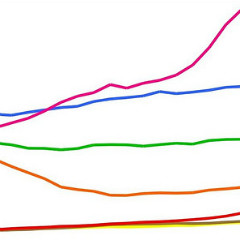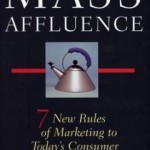
After conferring behind closed doors with practitioners of the dismal science, Speaker Pelosi emerged to say that it was the task of Congress to boost the mood of businesspeople. “The word of the day is confidence,” said Pelosi. “Confidence in our markets, confidence in lending, confidence in our financial institutions.”
Here’s a free Latin lesson. The root of the word confidence is fide—faith. And given what history has to say about the effectiveness of government spending to spur economies, crossing Speaker Pelosi’s bridge over these troubled currents requires a big leap of the stuff.
Veronique de Rugy is an economist at George Mason University’s Mercatus Center. She has an article in the April 2009 issue of Reason (unfortunately not yet webbed) that should give people pause about the effectiveness of stimulus packages.
She mentions, for instance, Japan’s trouble in the 1990s with (sound familiar?) housing and stock markets in the tank. The response: “Between 1992 and 1999, Japan passed eight stimulus packages totaling roughly $840 billion in today’s dollars. During that time, the debt-to-GDP ratio skyrocketed, the country was rocked by massive corruption scandals, and the economy never did recover.”
Another related assumption is that federal wartime spending helps sluggish economies. De Rugy marshals evidence by several researchers that not only disprove this assumption but indicate the that the opposite might be true. She cites, for example, the finding by Harvard economist Robert Barro that for every buck in wartime spending, we get back three quarters and a nickel.
What about the Great Depression? Surprisingly, government spending didn’t help there either. De Rugy cites a paper in the 1992 Journal of Economic History:
“A simple calculation indicates that nearly all of the observed recovery in the U.S. economy prior to 1942 was due to monetary expansion,” which is to say, not federal spending.
So what did it? “Huge gold inflows in the mid- and late-1930s swelled the U.S. money stock and appear to have stimulated the economy by lowering real interest rates and encouraging investment spending and purchases of durable goods.”
The paper’s authorship is interesting. It’s by Christina and David Romer. The former currently chairs the president’s Council of Economic Advisers. She’s evidently having a tough go at making the transition.
Speaker Pelosi should stop worrying so much about confidence and start reading some history. She should also take a second to consider these words from Dorothy Sayers’ book Creed or Chaos: “A society in which consumption has to be artificially stimulated in order to keep production going is a society founded on trash and waste, and such a society is a house built upon sand.”
America’s businesspeople will again have confidence when they can see authentic and genuine growth. What we’re seeing right now is just an ignorance of the past and blind hope for the future.












